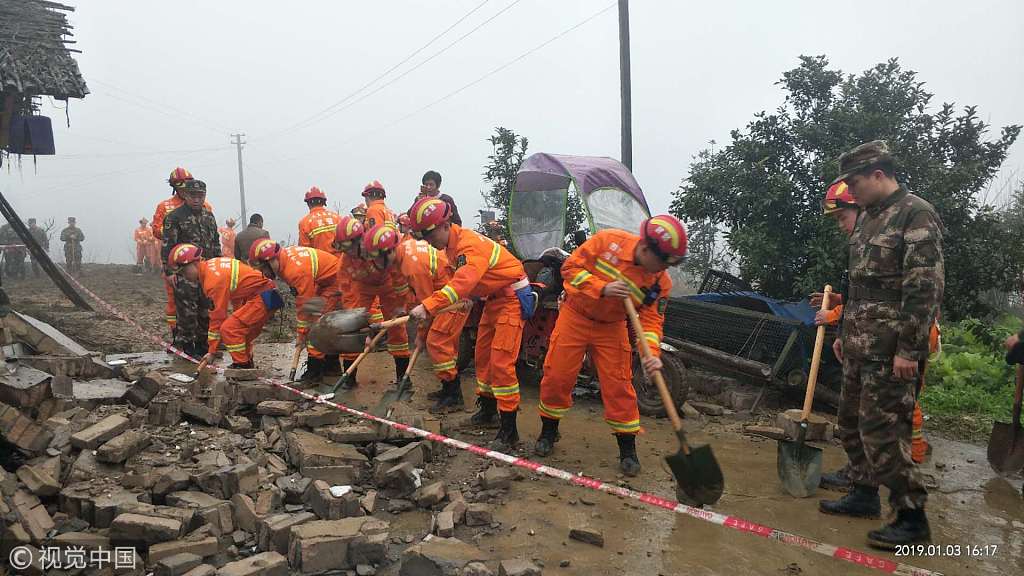Quake prediction project opens arms to world talent
China has officially launched an earthquake prediction project in Southwest China that will be open to scientists from around the world, a senior China Earthquake Administration official said.
China has officially launched an earthquake prediction project in Southwest China that will be open to scientists from around the world, a senior China Earthquake Administration official said.

Chinese rescuers clear away debris of a devastated house after a 5.3-magnitude earthquake in Gongxian county, Yibin city, Southwest China's Sichuan province, on Jan 3, 2019. [Photo/VCG]
The design for the project, which could lead to breakthroughs in temblor predictions, was approved by the administration and published in November.
A budget of 30 million yuan ($4.47 million) for purchasing sensor equipment and another 18 million yuan for related work this year have been approved by the Ministry of Finance, said Wang Manda, deputy director-general of international cooperation at the administration.
He said about 27 million yuan will be mobilized to support the first batch of scientific research at the project site, which spans Yunnan and Sichuan provinces.
The site is the first in the world to concentrate on earthquakes with continental epicenters. Wang said it will also stand out because of its comprehensive observations and experiments covering the whole earthquake process, ranging from underground ruptures to the seismic response of buildings.
A supercomputing platform will be established at the site, and Wang said numerical simulation will be carried out for the entire earthquake process to facilitate research.
The project is based on a philosophy of openness and sharing, he said. "It's not only researchers with our administration who will use it," Wang said. "Other scientists, from both home and abroad-including those from universities and public institutes-will also be welcome to come to conduct research and test their theories in the field."
The observational data and research results will be shared to the "maximum extent", he added.
Liu Guiping, deputy head of the China Earthquake Networks Center, said Yunnan and Sichuan have been attracting large numbers of geophysicists because of the high frequency of seismic activity in the region.
Many international scientists have conducted research in the tremor-plagued region, she said, and the new project is likely to see many specialists return, bringing the latest technologies and research approaches, which will further strengthen the scientific foundation for earthquake prediction research in the area.
A lot of work had been done collecting basic information for scientific research before the design was unveiled, including detecting the region's geological structure and pinpointing earthquake faults. More earthquake monitoring stations were also built to improve effectiveness.
Some experts have been conducting detailed detection work in areas with high potential for major quakes over the past three to four years, she added.
"Our biggest hope in constructing the facility is to gain new knowledge about predicting earthquakes," Liu said. "With this as a basis, we expect to make some breakthroughs."

